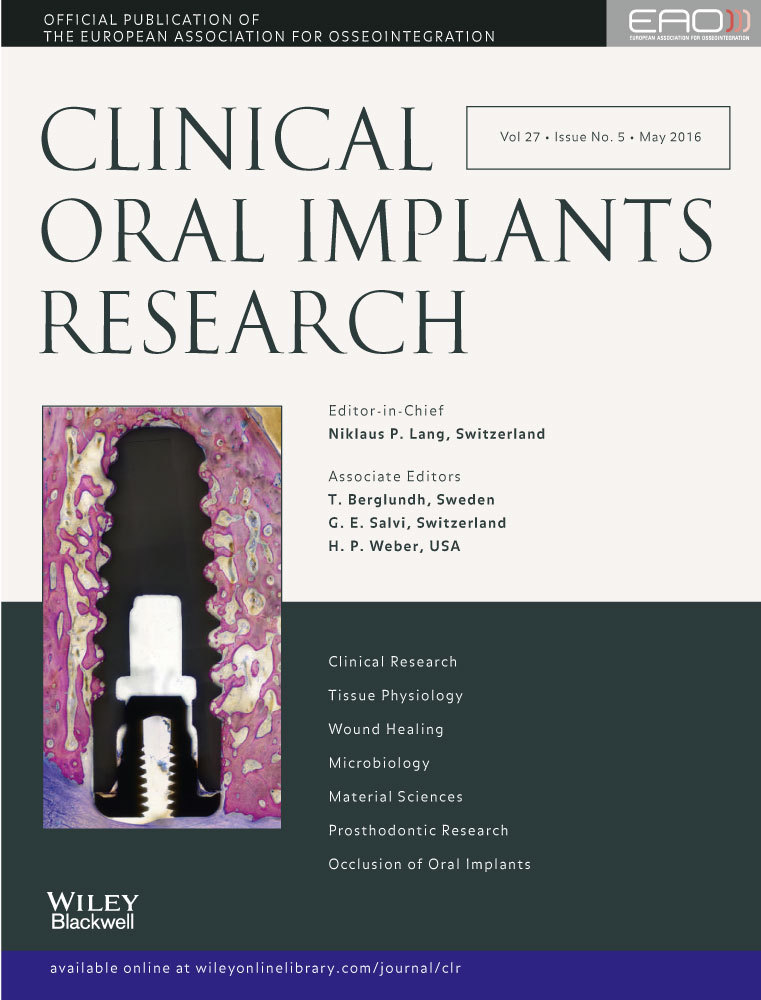Dental floss as a possible risk for the development of peri-implant disease: an observational study of 10 cases
Abstract
Aim
To report on a possible relationship between the use of dental floss or superfloss and the development of peri-implantitis.
Materials and methods
Ten patients with progressive peri-implantitis with an intensive oral hygiene protocol, which consisted of extensive professional supra- and submucosal cleaning, and not responding to this therapy were scheduled for examination. Plaque and bleeding indices and probing depth measurements were assessed, and radiographic examination was performed every two years.
Results
In all ten cases, remnants of dental floss were found around the neck and coronal part of a dental implant. After careful removal of these floss remnants and implant cleansing, a significant improvement in the peri-implant conditions in nine of ten cases was noted. In one case, peri-implant probing depth decreased substantially. However, bleeding on probing was still present. In vitro testing yielded that the application of various types of dental floss on the exposed rough implant surfaces may easily lead to tearing of floss fibers. This may result in the deposition of floss remnants on rough implant surfaces, which, in turn, may lead to the development of plaque-related peri-implant inflammation and, subsequently, bone loss.
Conclusion
In case of exposed rough surfaces of the dental implant, the peri-implant conditions may be jeopardized by the application of dental floss, and hence, the utilization of interproximal brushes or toothpicks may be preferred for daily home care practices.




